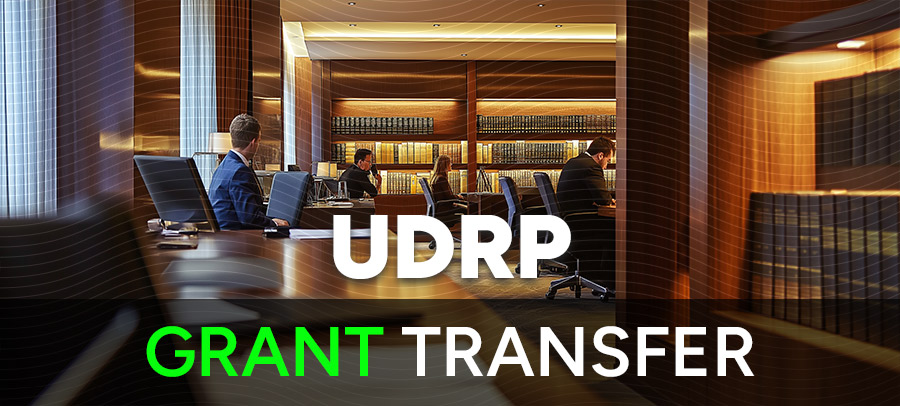The domain ASLA.com was registered in 1995 and 30 years later it was lost in a UDRP filed by the American Society of Landscape Architects, Inc. that operates from ASLA.org.
Archive.org copies of the web site show that since at least 2004, an organization called “American Seminar Leaders Association” made use of the domain. That organization does not appear to be active, currently. In 2023, the domain was added to Sedo by means of changing its DNS temporarily; the listing seeks $1.5 million dollars for the domain.
The UDRP panel found that the Respondent likely acquired the domain with knowledge of the Complainant’s longstanding ASLA trademark, which has been in use since 1899.
Despite the Respondent’s claim of ownership since 1995, no evidence was provided to support this; the domain appeared to have changed hands between March 2023 and February 2024. The Forum panel determined that the Respondent attempted to trade off the Complainant’s goodwill by using a entity name and targeting the same professional audience: landscape architects. According to the UDRP, the Respondent attempted to sell the domain to the Complainant, further undermining any claim of legitimate rights.
Final decision: Transfer the domain ASLA.com to the Complainant.

Copyright © 2025 DomainGang.com · All Rights Reserved.American Society of Landscape Architects, Inc. v. Jenel Murgu / XM Solutions LLC
Claim Number: FA2503002143345
PARTIES
Complainant is American Society of Landscape Architects, Inc. (“Complainant”), represented by Sam E. Iverson of Pillsbury Winthrop Shaw Pittman LLP, New York, USA. Respondent is Jenel Murgu / XM Solutions LLC (“Respondent”), California, USA.
REGISTRAR AND DISPUTED DOMAIN NAME
The domain name at issue is asla.com, registered with GoDaddy.com, LLC.
PANEL
The undersigned certifies that he has acted independently and impartially and to the best of his knowledge has no known conflict in serving as Panelist in this proceeding.
Charles A. Kuechenmeister, Panelist.
PROCEDURAL HISTORY
Complainant submitted a Complaint to Forum electronically on March 4, 2025; Forum received payment on March 4, 2025.
On March 5, 2025, GoDaddy.com, LLC confirmed by e-mail to Forum that the asla.com domain name is registered with GoDaddy.com, LLC and that Respondent is the current registrant of the name. GoDaddy.com, LLC has verified that Respondent is bound by the GoDaddy.com, LLC registration agreement and has thereby agreed to resolve domain disputes brought by third parties in accordance with ICANN’s Uniform Domain Name Dispute Resolution Policy (the “Policy”).
On March 6, 2025, Forum served the Complaint and all Annexes, including a Written Notice of the Complaint setting a deadline of March 26, 2025 by which Respondent could file a Response to the Complaint, via e-mail to all entities and persons listed on Respondent’s registration as technical, administrative, and billing contacts, and to postmaster@asla.com. Also on March 6, 2025, the Written Notice of the Complaint, notifying Respondent of the e-mail addresses served and the deadline for a Response, was transmitted to Respondent via post and fax to all entities and persons listed on Respondent’s registration as technical, administrative and billing contacts.
A timely Response was received and determined to be complete on March 24, 2025.
On March 25, 2025, pursuant to Complainant’s request to have the dispute decided by a single-member Panel, Forum appointed Charles A. Kuechenmeister as Panelist.
On March 26, 2025 Complainant filed an Additional Submission, which was considered by the Panel.
Having reviewed the communications records, the Administrative Panel (the “Panel”) finds that Forum has discharged its responsibility under Paragraph 2(a) of the Rules for Uniform Domain Name Dispute Resolution Policy (the “Rules”) “to employ reasonably available means calculated to achieve actual notice to Respondent” through submission of Electronic and Written Notices, as defined in Rule 1 and Rule 2.
RELIEF SOUGHT
Complainant requests that the domain name be transferred from Respondent to Complainant.
PARTIES’ CONTENTIONS
A. Complainant
Complainant is a non-profit professional association for landscape architects. It has been offering its services under the ASLA mark since at least as early as 1899 and has registered that mark with the United States Patent and Trademark Office (USPTO). The domain name is identical or confusingly similar to the ASLA mark as it fully incorporates the mark, merely adding a generic top-level domain (gTLD).
Respondent has no rights or legitimate interests in the domain name. It has not been commonly known by the domain name, it is not affiliated with Complainant and Complainant has not authorized it to use its mark, and Respondent is not using the domain name in connection with a bona fide offering of goods or services or for a legitimate noncommercial or fair use but instead is using the domain name to pass off as Complainant and purportedly offer similar trade association services marketed to landscape architect professionals in competition with Complainant.
Respondent registered and uses the domain name in bad faith. By passing off as Complainant and purporting to offer trade association services targeting landscape architects in competition with Complainant, Respondent is attempting to attract for commercial gain Internet users to his website by creating a likelihood of confusion with Complainant’s mark as to the source, sponsorship, affiliation or endorsement of its website, and it is using the domain name to solicit “membership” fees and donations for a fake association, diverting members and charitable contributions away from Complainant.
B. Respondent
On March 24, 2025 Respondent filed a document entitled Rejection of Fraudulent Accusations and Illegal Claim Number FA2503002143345, addressed to Complainant and its counsel of record, stating that Respondent provides a voluntary marketing service for professionals in the construction industry—builders, architects, landscapers, and pool companies and stores, who wish to expand their reach. It officially declares Complainant’s fake accusations null and void. Complainant owes Respondent an immediate apology—especially since Respondent now has proof that Complainant has been trying to squat Respondent’s domain name since 2001. Complainant’s statements and documents expose its clear and repeated attempts to steal what is not Complainant’s through deceit and intimidation. This is an illegal hijacking attempt, and Respondent will not tolerate it. Any attempt to pressure Respondent into arbitration through a third party is rejected outright. Respondent does not recognize any third-party claims over its domain name.
Respondent demands that Complainant withdraw its Complaint, issue a formal written apology for bringing this proceeding, and make Respondent a reasonable financial offer if it is genuinely interested in acquiring the domain name. If Complainant fails to comply, Respondent will initiate legal action against ASLA.org and every single party involved in this fraudulent scheme. Complainant and all its accomplices will be held fully accountable for grand theft, defamation, illegal misappropriation of intellectual property, cybercrime, and any other applicable violations. Respondent is ready and prepared to file multiple felony complaints with local police and the FBI.
Along with the above document Respondent also sent an email addressed to Forum and Complainant’s representatives stating that the domain name is Respondent’s and has been since 1995, at some time in the past as a courtesy Respondent offered to sell the domain name to Complainant, Complainant ignored that offer and this proceeding is an attempt by Complainant to hijack the domain name.
C. Complainant Additional Submission
Respondent’s filings do not comply with Rule 5. Its failure to engage meaningfully with Complainant’s allegations amounts to tacit admission of them. Respondent’s efforts to sell the domain name to Complainant as described in its Response is further evidence of a lack of rights or legitimate interests in the domain name, and its threats to sue and file felony charges if Complainant fails to negotiate to purchase the domain name is further evidence of bad faith.
FINDINGS
Paragraph 15(a) of the Rules instructs this Panel to “decide a complaint on the basis of the statements and documents submitted in accordance with the Policy, these Rules and any rules and principles of law that it deems applicable.”
Paragraph 4(a) of the Policy requires a complainant to prove each of the following three elements to obtain an order cancelling or transferring a domain name:
(1) the domain name registered by the respondent is identical or confusingly similar to a trademark or service mark in which the complainant has rights; and
(2) the respondent has no rights or legitimate interests in respect of the domain name; and
(3) the domain name has been registered and is being used in bad faith.
The Panel finds as follows with respect to the matters at issue in this proceeding:
Identical and/or Confusingly Similar
The ASLA mark was registered to Complainant with the USPTO on September 10, 2002 (TSDR printout included in Complaint Exhibit A). Complainant’s registration of its mark with the USPTO establishes its rights in that mark for the purposes of Policy ¶ 4(a)(i). Liberty Global Logistics, LLC v. damilola emmanuel / tovary services limited, FA 1738536 (Forum Aug. 4, 2017) (stating, “Registration of a mark with the USPTO sufficiently establishes the required rights in the mark for purposes of the Policy.”).
Respondent’s domain name is identical or confusingly similar to the ASLA mark. It fully incorporates the mark, merely adding the “.com” gTLD. This change does not distinguish the domain name from Complainant’s mark for the purposes of Policy ¶ 4(a)(i). Dell Inc. v. Protection of Private Person / Privacy Protection, FA 1681432 (Forum Aug. 1, 2016) (“A TLD (whether a gTLD, sTLD or ccTLD) is disregarded under a Policy ¶ 4(a)(i) analysis because domain name syntax requires TLDs.”). The WIPO Overview 3.0, at ¶ 1.7, states that the test for confusing similarity “typically involves a side-by-side comparison of the domain name and the textual components of the relevant trademark to assess whether the mark is recognizable within the domain name.” The WIPO Overview is not a definitive statement of applicable law which governs any particular issue, but it does express a consensus among a significant number of UDRP panelists as to how particular issues typically are and should be resolved. The Panel accepts that consensus on this and other issues addressed later in this Decision. Notwithstanding the changes described above, Complainant’s mark is clearly recognizable within the domain name.
For the reasons set forth above, the Panel finds that the domain name is identical or confusingly similar to the ASLA mark, in which Complainant has substantial and demonstrated rights.
Rights or Legitimate Interests/Registration and Use in Bad Faith
If a complainant makes a prima facie case that the respondent lacks rights or legitimate interests in the domain name under Policy ¶ 4(a)(ii), the burden of production shifts to respondent to come forward with evidence that it has rights or legitimate interests in it. Neal & Massey Holdings Limited v. Gregory Ricks, FA 1549327 (Forum Apr. 12, 2014) (“Under Policy ¶ 4(a)(ii), Complainant must first make out a prima facie case showing that Respondent lacks rights and legitimate interests in respect of an at-issue domain name and then the burden, in effect, shifts to Respondent to come forward with evidence of its rights or legitimate interests.”). If a respondent fails to come forward with such evidence, the complainant’s prima facie evidence will be sufficient to establish that respondent lacks such rights or legitimate interests. If the respondent does come forward with such evidence, the Panel must assess the evidence in its entirety. At all times, the burden of proof remains on the complainant. WIPO Overview 3.0, at ¶ 2.1.
Policy ¶ 4(c) lists the following three nonexclusive circumstances, any one of which if proven can demonstrate a respondent’s rights or legitimate interests in a domain name for the purposes of Policy ¶ 4(a)(ii):
(i) before any notice to the respondent of the dispute, the respondent has used or has made demonstrable preparations to use the domain name or a name corresponding to the domain name in connection with a bona fide offering of goods or services; or
(ii) the respondent (as an individual, business or other organization) has been commonly known by the domain name, even if the respondent has acquired no trademark or service mark rights; or
(iii) the respondent is making a legitimate noncommercial or fair use of the domain name, without intent for commercial gain to misleadingly divert consumers or to tarnish the trademark or service mark at issue.
Complainant asserts that Respondent has no rights or legitimate interests in the domain name because (i) it has not been commonly known by the domain name, (ii) it is not affiliated with Complainant and Complainant has not authorized it to use its mark, and (iii) Respondent is not using the domain name in connection with a bona fide offering of goods or services or for a legitimate noncommercial or fair use but instead is using the domain name to pass off as Complainant and purportedly offer similar trade association services marketed to landscape architect professionals in competition with Complainant. These allegations are addressed as follows:
The WHOIS information provided to Forum by the registrar lists the named Respondent as the registrant of the domain name. Neither of these names bears any resemblance to the domain name. Evidence could, of course, in a given case demonstrate that the respondent is commonly known by a domain name different from the name in which it registered the domain name, e.g., the case of a domain name incorporating the brand name of a specific product offered by and associated with the respondent. In the absence of any such evidence, however, UDRP panels have consistently held that WHOIS evidence of a registrant name which does not correspond with the domain name is sufficient to prove that the respondent is not commonly known by the domain name. Amazon Technologies, Inc. v. Suzen Khan / Nancy Jain / Andrew Stanzy, FA 1741129 (Forum Aug. 16, 2017) (finding that respondent had no rights or legitimate interests in the disputed Domain Name when the identifying information provided by WHOIS was unrelated to the Domain Name or respondent’s use of the same); Alaska Air Group, Inc. and its subsidiary, Alaska Airlines v. Song Bin, FA 1574905 (Forum Sept. 17, 2014) (holding that the respondent was not commonly known by the disputed domain name as demonstrated by the WHOIS information and based on the fact that the complainant had not licensed or authorized the respondent to use its ALASKA AIRLINES mark). The Panel is satisfied that Respondent has not been commonly known by the domain name for the purposes of Policy ¶ 4(c)(ii).
Complainant alleges that Respondent is not affiliated with it and that it has not licensed or authorized Respondent to use its mark. Complainant has specific competence to make this allegation and it is not disputed. In the absence of evidence that a respondent is authorized to use a complainant’s mark in a domain name or that a respondent is commonly known by the disputed domain name, the respondent may be presumed to lack rights or legitimate interests in the domain name. IndyMac Bank F.S.B. v. Eshback, FA 830934 (Forum Dec. 7, 2006) (finding that the respondent failed to establish rights and legitimate interests in the emitmortgage.com domain name as the respondent was not authorized to register Domain Name featuring the complainant’s mark and failed to submit evidence that it is commonly known by the domain name), Indeed, Inc. v. Ankit Bhardwaj / Recruiter, FA 1739470 (Forum Aug. 3, 2017) (“Respondent lacks both rights and legitimate interests in respect of the at-issue domain name. Respondent is not authorized to use Complainant’s trademark in any capacity and, as discussed below, there are no Policy ¶ 4(c) circumstances from which the Panel might find that Respondent has rights or interests in respect of the at-issue domain name.”).
Both of the above factors contribute to a prima facie case of no rights or legitimate interests. In order to meet its initial burden under Policy ¶ 4(a)(ii), however, a Complainant must present evidence on all three of the factors listed in Policy ¶ 4(c).
Complainant alleges that Respondent is not using the domain name in connection with a bona fide offering of goods or services or for a legitimate noncommercial or fair use but instead is using the domain name to pass off as Complainant and offer competing services. It is well settled that passing off as a complainant or an affiliate and offering the same services as a complainant does not qualify as a bona fide offering of goods or services within the meaning of Policy ¶ 4(c)(i), or as a legitimate noncommercial or fair use within the meaning of Policy ¶ 4(c)(iii). Netflix, Inc. v. Irpan Panjul / 3corp.inc, FA 1741976 (Forum Aug. 22, 2017) (“The usage of Complainant’s NETFLIX mark which has a significant reputation in relation to audio visual services for unauthorised audio visual material is not fair as the site does not make it clear that there is no commercial connection with Complainant and this amounts to passing off . . . As such the Panelist finds that Respondent does not have rights or a legitimate interest in the Domain Name.”), Ripple Labs Inc. v. NGYEN NGOC PHUONG THAO, FA 1741737 (Forum Aug. 21, 2017) (“Respondent uses the [disputed] domain name to divert Internet users to Respondent’s website… confusing them into believing that some sort of affiliation exists between it and Complainant… [which] is neither a bona fide offering of goods or services under Policy ¶ 4(c)(i) nor a legitimate noncommercial or fair use under Policy ¶ 4(c)(iii).”).
In this case, the evidence of passing off is mixed. Complainant’s services consist essentially of trade association services, namely, promoting the interests of professional landscape architects (description of services in TSDR printout evidencing USPTO registration of mark). The evidence of Respondent’s use of the domain name, consisting of screenshots of pages on its website submitted as Complaint Exhibits D and F through J inclusive, shows what is essentially a marketing enterprise, a business directory, i.e., “a comprehensive platform dedicated to the vibrant fields of architecture, scenery, builders, suppliers, and landscape, our directory serves as a valuable resource for professionals and enthusiasts alike.” (excerpt from Respondent’s website, Complaint Exhibit F). The types of businesses addressed on Respondent’s Learning Center web page (Complaint Exhibit G) include architecture, hospitality, interior design, manufacturing, residential supplies and urban design, in addition to landscape architects. The general appearance of the parties’ websites is completely different—there is no similarity whatever in their look and feel. Complainant’s logo consists of a square with curved green lines drawn at various angles (screenshots of Complainant’s website submitted as Complaint Exhibits B and C), while Respondent’s logo is a red circle with ASLA printed in the center and the words “LANDSCAPNG [sic],” “ARCHITECTS” and “SCENERY” written in the outer circumference of the circle. Respondent’s website does not expressly state that it is not affiliated with Complainant, but the website taken as a whole does not represent itself as being Complainant’s or that of an affiliate.
At the same time, a disproportionate volume of the material on the Learning Center page deals with landscape architects and this page purports to offer many of the same kinds of services and opportunities for landscape architects as are advertised on Complainant’s website. The words printed around the circumference of Respondent’s logo, Landscapng [sic], Architects, and Scenery, also appear to be directed toward landscape architecture more than the broad scope of businesses described in Complaint Exhibit G. Each page of Respondent’s website contains a scanning code redirecting the visitor to the website of another business, called Zoom Trans, which is a search engine optimizing (SEO) service (screenshot submitted as complaint Exhibit K). The evidence does not demonstrate what relationship if any the two businesses may have but it is clear that the website resolving from the domain name refers visitors to the SEO website, and it can reasonably be inferred that some kind of commercial benefit accrues to Respondent from this referral.
Taken as a whole, the body of evidence does not support Complainant’s allegation of passing off. Respondent’s site simply does not pose or represent itself as that of Complainant or an affiliate. Passing off is not proven. Nevertheless, the confusingly similar domain name may lead internet users to believe that the resolving website will be associated with Complainant, and the question arises whether this use qualifies as being in connection with a bona fide offering of goods or services. Bona fide means in good faith, or the absence of bad faith. Since bad faith is also at the heart of the third element of Complainant’s case under Policy ¶ 4(a)(iii), the Panel addresses this issue with reference to factors associated with the bad faith analysis.
The concept of bad faith as illustrated in the four subparagraphs of Policy ¶ 4(b) necessarily involves a subjective intent on the part of a respondent knowingly to trade upon the goodwill of the complainant. Such subjective intent would in turn require that the respondent actually knew of the complainant and its rights in the relevant mark when it registered the domain name. In attempting to discern actual knowledge and a subjective bad faith intent, panels have looked at many different types of evidence, including but not limited to use of a domain name in direct competition with a trademark owner, impersonation, the parties operating in the same market segment, the parties being physically located in the same general geographic area, a pattern of bad faith conduct, actual prior association between or among the parties, the fanciful or famous nature of the trademark, suggesting that any similarity is not happenstance. Importantly, allegations about a respondent’s subjective intention are not evidence in this regard.
In cases where no Response has been filed or where, as in this case, the Response does not address the issue, it is not always easy to determine whether the respondent registered and has been using the domain name with actual knowledge of the complainant and its rights in the mark. The relevant facts are as follows:
The parties’ websites are substantially different in appearance and focus but there is some overlap in content in that they both offer support and promotion services for landscape architects. Complainant offered no evidence bearing on the extent to which its ASLA mark has acquired distinctiveness or secondary meaning in the minds of the relevant public. The mark is a four-letter string that could stand for many things. No evidence has been provided to show that consumers widely recognize this mark as being associated primarily with Complainant. Its website describes the many services and promotions currently offered in support of the landscape architect profession and states that the Association has been in business for over 125 years, and this is corroborated by the January 1899 first use date appearing on the TSDR printout included in Complaint Exhibit A, but there is no evidence as to how many members it has had over the years, the geographic scope of its operations, or any evidence of the extent to which the relevant public recognizes this mark as associated with Complainant. There is no evidence of the level of notoriety that would render implausible a denial of knowledge by Respondent.
The name of the sponsor of Respondent’s website appears near the top of the archived homepage of Respondent’s website submitted as Complaint Exhibit F: “Welcome to the premier online destination for the Architecture, Scenery & Landscape Association (ASLA) business directory.” This entity name also appears in copyright notations at the end of the other pages on the website (Complaint Exhibits D and G through J inclusive). This name is somewhat awkward and appears to be more of a strained effort to fit a name to the letters of Complainant’s ALSA mark than a commercially appealing, business-like name. And, as discussed above, the three words appearing in Respondent’s logo appear directed more toward landscaping enterprises than the other types of businesses allegedly served by Respondent’s directory business.
The WHOIS information furnished to Forum by the registrar shows that the domain name was created in May 1995, which is well after Complainant began using its mark in 1899. The same WHOIS information also notes an “update” as of March 2025. Complainant alleges (without supporting evidence) that the domain name was also updated in December 2023 and suggests that Respondent may have acquired the domain name at or about that time. In support of this theory, Complainant submitted a screenshot of a parking page to which the domain name pointed in March 2023, before the December 2023 update. This page contained three hyperlinks pointing to “All Inclusive Vacation Packages,” “Anti-Wrinkle Creams,” and “Top 10 Luxury Cars,” none of which has any relationship with Respondent’s business and features the name and displays the name “Anh-nguyen.net.” No evidence of Respondent’s business appears on this page. The first time Respondent’s business appears on a website resolving from the domain name is the screenshot archived as of February 28, 2024 submitted as Complaint Exhibit F. In assessing whether a respondent had actual knowledge of the complainant and its rights in the relevant mark, the date on which the respondent acquired the domain name is the operative date, not the creation date. EMindful Inc. v. Yao Chang, FA 1825435 (Forum Feb. 20, 2019) (“The date on which the current registrant acquired the Domain Name is the relevant date in assessing bad faith.”), Ass’n. of Junior Leagues Int’l Inc. v. This Domain Name May Be For Sale, FA 857581 (Forum Jan. 4, 2007) (determining that, even though the disputed domain name was registered earlier, the respondent’s rights in the disputed domain name began when the domain name was transferred to the respondent, which complainant’s rights in the mark predated). It appears from the evidence that Respondent most likely acquired the domain name sometime after March 2023 and before February 2024.
On balance, based upon the close similarity (exact duplication except for the gTLD) of the domain name to Complainant’s mark, the strained effort to fit Respondent’s entity name to the letters of that mark, and the emphasis Respondent’s website places upon services for the landscape architect profession, it appears more likely than not that Respondent had actual knowledge of Complainant and its ALSA mark when it acquired the domain name, and that Respondent selected the domain name incorporating Complainant’s mark in order to trade off of Complainant’s goodwill and to attract internet traffic to its website, where it purports to offer services similar or identical to those offered by Complainant. Respondent is not passing off as Complainant but its use of the virtually identical domain name creates initial interest confusion among internet users as to the source or sponsorship of its website and this does not qualify as a bona fide offering of goods or services within the meaning of Policy ¶ 4(c)(i), or as a legitimate noncommercial or fair use within the meaning of Policy ¶ 4(c)(iii). Diners Club Int’l, Ltd. v. Infotechnics Ltd., FA 169085 (Forum Aug. 20, 2003) (“Respondent does not have the right to completely appropriate Complainant’s registered trademark in a domain name in a way that will mislead Internet users as to the source or affiliation of the attached website.”); Hunter Fan Co. v. MSS, FA 98067 (Forum Aug. 23, 2001) (“use of [a] domain name comprised of Complainant’s mark in a manner likely to cause initial interest confusing demonstrates bad faith.”). The evidence furnished by Complainant establishes the required prima facie case of no rights or legitimate interests. It is incumbent upon Respondent to come forward with any evidence that it has rights or legitimate interests in the domain name.
Respondent offered no relevant evidence on this or any of the other two elements set forth in Policy ¶ 4(a). The primary focus of the Response is to demand that Complainant withdraw its Complaint, deny that Respondent is subject to arbitration in a UDRP proceeding,1 and threaten substantial money demand litigation and felony criminal charges against Complainant and “every single party involved in this fraudulent scheme” if its demands are not met. An email dated March 6, 2024 from Respondent Jenel Murgu filed as an annex to the Response states that the domain name “is ours and has been since 1995 but he submitted no evidence to support that allegation. Nor did Respondent explain when it acquired the domain name, when it began using it in connection with its business, or how it happened to select asla.com as its domain name. It does not state whether it knew of Complainant and its ASLA mark when it acquired the domain name. In short, Respondent failed to come forward with any evidence supporting a claim of rights or legitimate interests in the domain name.
In fact, Respondent alleges that it attempted to sell the domain name to Complainant, which tends to defeat a claim of rights or legitimate interests rather than support it. Williams-Sonoma, Inc. v. Fees, FA 937704 (Forum Apr. 25, 2007) (concluding that a respondent’s willingness to sell a domain name to the complainant suggests that a respondent has no rights or legitimate interests in that domain name under Policy ¶ 4(a)(ii)).
On the basis of the evidence presented, the Panel finds that Respondent has no rights or legitimate interests in the domain name.
Registration and Use in Bad Faith
Policy ¶ 4(b) sets forth a nonexclusive list of four circumstances, any one of which if proven would be evidence of bad faith use and registration of a domain name. They are as follows:
(i) circumstances indicating that the respondent has registered or acquired the domain name primarily for the purpose of s+elling, renting, or otherwise transferring the domain name registration to the complainant which is the owner of the trademark or service mark or to a competitor of that complainant, for valuable consideration in excess of the respondent’s documented out-of-pocket costs directly related to the domain name; or
(ii) the respondent has registered the domain name in order to prevent the owner of the trademark or service mark from reflecting the mark in a corresponding domain name, provided that the respondent has engaged in a pattern of such conduct; or
(iii) the respondent has registered the domain name primarily for the purpose of disrupting the business of a competitor; or
(iv) by using the domain name, the respondent has intentionally attempted to attract, for commercial gain, Internet users to the respondent’s web site or other on-line location, by creating a likelihood of confusion with the complainant’s mark as to the source, sponsorship, affiliation or endorsement of the respondent’s web site or location or of a product of service on the respondent ‘s web site or location.
The evidence of Respondent’s conduct discussed above in the rights or legitimate interests analysis also supports a finding of bad faith registration and use, based upon the foregoing grounds articulated in the Policy and upon additional grounds adopted by UDRP panels over the years. First, by registering and using the confusingly similar domain name to attract Internet users to its website, where it purports to offer services similar or identical to those offered by Complainant, Respondent is using the confusingly similar domain name to attract, for commercial gain, Internet users to its web site by creating a likelihood of confusion with the Complainant’s mark as to the source, sponsorship, affiliation or endorsement of its web site. Respondent’s Learning Center page (Complaint Exhibit G) states that there is no charge for listing one’s business on the Respondent’s directory but the Become a Member and Support pages (Complaint Exhibits I and J) solicit donations or contributions, and Respondent is likely monetizing the scannable code link to the ZoomTrans SEO website (Complaint Exhibit K). Regardless of which scenario is present here, Respondent’s conduct fits squarely within the circumstances described in Policy ¶ 4(b)(iv) and is manifest evidence of bad faith registration and use. Xylem Inc. and Xylem IP Holdings LLC v. YinSi BaoHu YiKaiQi, FA 1612750 (Forum May 13, 2015) (“The Panel agrees that Respondent’s use of the website to display products similar to Complainant’s, imputes intent to attract Internet users for commercial gain, and finds bad faith per Policy ¶ 4(b)(iv).”).
Finally, although not argued by Complainant, the Panel has found that Respondent had actual knowledge of Complainant and its mark when it acquired the domain name. This does not fit within any of the circumstances described in Policy ¶ 4(b) but that paragraph recognizes that mischief can manifest in many different forms and takes an open-ended approach to bad faith, listing some examples without attempting to enumerate all its varieties. Worldcom Exchange, Inc. v. Wei.com, Inc., WIPO Case No. D-2004-0955 (Jan. 5, 2005). The non-exclusive nature of Policy ¶ 4(b) allows for consideration of additional factors in an analysis for bad faith, and acquiring a confusingly similar domain name with actual knowledge of a complainant’s rights in its mark is evidence of bad faith registration and use for the purposes of Policy ¶ 4(a)(iii). Univision Comm’cns Inc. v. Norte, FA 1000079 (Forum Aug. 16, 2007) (rejecting the respondent’s contention that it did not register the disputed domain name in bad faith since the panel found that the respondent had knowledge of the complainant’s rights in the UNIVISION mark when registering the disputed domain name).
For the reasons above set forth above, the Panel finds that Respondent registered and is using the domain name in bad faith within the meaning of Policy ¶ 4(a)(iii).
DECISION
Complainant having established all three elements required under the Policy, the Panel concludes that relief shall be GRANTED.
Accordingly, it is Ordered that the asla.com domain name be TRANSFERRED from Respondent to Complainant
Charles A. Kuechenmeister, Panelist
March 28, 2025










